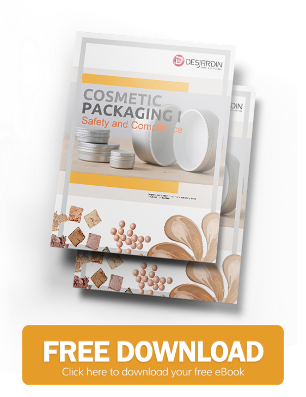There is a need to maintain a certain level of standards in regards to the manufacturing and packaging of many products that are used in the home or for business. The ISO 22715 standardizes the packaging of cosmetics on a world-wide scale.
The International Organization for Standardization (ISO) formed in 1947, is a non-governmental organization based in Geneva that continually creates new standards and updates older ones as needed. This organization has 162 members and represents the interest of international standards in 196 countries thus covering approximately 97 percent of the world’s population. Since May 2016, there are currently over 21,500 ISO standards in existence.
ISO standards are used to help form public policies and business objectives that benefit the public. The organization develops new standards as requested when sectors and their stakeholders determine that a need exists. ISO oversees technical committees consisting of other NGOs, representatives from government agencies, consumer organizations, testing laboratories, and academics. The ISO maintains copyright to the standards that are developed by these technical committees. The organization also maintains an interest in intellectual property protection.
What is Standard ISO 22715?
 ISO 22715 provides specifications for the packaging and labeling of all cosmetic products that are sold or distributed at no charge; i.e. free samples. What is considered a cosmetic product is regulated through national regulations. In some cases, national regulations regarding cosmetic products can be stricter than those laid out in ISO 22715.
ISO 22715 provides specifications for the packaging and labeling of all cosmetic products that are sold or distributed at no charge; i.e. free samples. What is considered a cosmetic product is regulated through national regulations. In some cases, national regulations regarding cosmetic products can be stricter than those laid out in ISO 22715.
According to ISO 22715, packaging for cosmetics must be designed according to the specifications provided by the manufacturer to product the product from damage during storage, transport and handling. The packaging should also protect the product from deterioration and other conditions that could cause an adverse effect on it.
Specifications for labeling cosmetic packaging are also provided with ISO 22715. These specifications include:
- What information should appear on the packaging, such as:
- Product manufacturer’s name and address
- List of ingredients in descending order according to their percentage, if over one percent that are present in the product and are followed by the list of the coloring agents used in the product
- An explanation of what the product’s function is
- Directions for storing the product, when applicable
- Instructions for using the product, when applicable
- Precaution or warning statements, when applicable
- Weight at time of packaging
- How the information should appear on the packaging
- Requirements for primary packaging and secondary packaging if applicable
- Manufacture date or batch number that can be used to identify the product
Legal Relevance of ISO 22715
 While ISO 22715 is not legally binding, it is however, the common denominator of most of the national regulations that apply to the packaging and labeling of cosmetic products. Country regulators refer to ISO standards as guidelines to best practices for the various sectors for which they apply. Often, in order to comply with a local regulation, an individual, business or manufacturer must comply with the applicable ISO standard(s).
While ISO 22715 is not legally binding, it is however, the common denominator of most of the national regulations that apply to the packaging and labeling of cosmetic products. Country regulators refer to ISO standards as guidelines to best practices for the various sectors for which they apply. Often, in order to comply with a local regulation, an individual, business or manufacturer must comply with the applicable ISO standard(s).
As ISO maintains the copyrights for its standards, the organization is able to better distribute their standards and update as needed. The organization updates their standards every five to seven years in order to keep up with new technologies.
For the cosmetic sector there are 26 published standards, including ISO 22715 that are overseen by ISO’s cosmetic product technical committee, which was created in 1998. The committee includes standardization bodies from major markets, including leading ASEAN countries, the United States as represented by ANSI and most European countries. Currently there are 39 countries that participate in the standardization of cosmetic products and 27 observing countries with the committee.
The Deviation between Local Regulations and the ISO
There are two main reasons why local regulations and the ISO deviate:
- The national standardization institutes need to find a common denominator. This is not necessarily a bad thing being that this creates a common ground in which to start. Local legislation may exceed the requirements that are specified within the ISO standard. It is very rare that local legislation will contradict the ISO standard.
- The national standardization bodies represented in the ISO committee and the regulatory bodies in the corresponding countries are not the same. For example, in the United States, the Food & Drug Administration (FDA) regulates cosmetic packaging. However, the standards that are used come from the American National Standardization Institute (ANSI). The FDA is a dues-paying member of ANSI. The level of cooperation between organizations plays a major part is the coherence of standards and regulations.
When developing standards, it is suggested to base the conception on the coinciding ISO. Local regulations may exceed the requirements but it is the best starting point for international compliance with regulations.
Disclaimer:
The postings in this blog section do not necessarily represent Desjardin's positions, strategies or opinions.
References and Further Reading
- More posts on Cosmetic Packaging, by Alex Cosper and Dawn M. Turner
- Is It a Cosmetic, a Drug, or Both? (2016), by the U.S. Food and Drug Administration
- Regulation (EC) No 1223/2009 on Cosmetic Products (2009), The European Parliament the the European Council
- ISO 22715:2006: Cosmetics -- Packaging and labelling (2006), International Organization for Standardization






